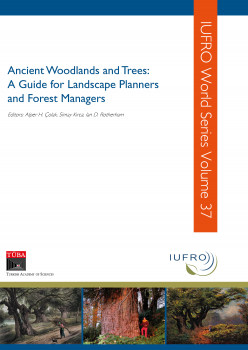Ancient Woodland in Concept and Practice

Ancient Woodland in Concept and Practice
During the 1970s, British ecologists adopted what they thought was a new concept, ancient woodland, which broadly meant medieval and pre-medieval woodland that still existed in the modern landscape.
The concept developed out of an expanding interest by ecologists in the history of the habitats they studied, epitomised by influential works on the Pinus sylvestris woodland in Scotland (Steven and Carlisle, 1959) and the woods of the New Forest (Tubbs 1968). At the same time, ecologists were realising that some rare woodland plant species were found in woods that had existed for centuries, but not in woods of recent origin (Pigott, 1969; Ratcliffe, 1968). Ancient woodland quickly became a key concept in nature conservation, partly because the species associated with such woodland were clearly vulnerable to changes in the pattern of woodland. Indeed, these associated species acquired an identity of their own as ‘ancient woodland indicators’ and were used to evaluate woodlands for nature conservation purposes (Peterken, 1974).
The concept, however, was easily misunderstood. In particular, many people thought ‘ancient woodland’ meant woodland with ancient trees, whereas ecologists meant ‘land that has been continuously wooded since the Middle Ages’, i.e., the concept referred to habitat continuity and not the age of the trees, though of course some ancient woodland was in fact dominated by large, old trees. The other misunderstanding was to assume that the term ‘ancient woodland indicator’ could be taken literally, i.e., that, if any of the species known to be associated with ancient woodland were found in a wood, then that wood must have enjoyed a continuous existence back to at least the Middle Ages. Despite the confusions, the concept of ancient woodland has since become important in British ecology and conservation. It helps explain the distribution of wildlife species; links ecology with cultural and landscape history; and forms a key element in forestry policy. Allied to this, the concept of ancient woodland indicators has also lodged in the public imagination. Such species tend to be rare and local; they implicitly require land to have remained wooded for several centuries; and for both these reasons they tend to be a priority for nature conservation.
This chapter describes how the concept developed in Britain and its strengths and limitations for ecologists and conservationists. It also considers its use and limitations in mainland Europe and eastern North America.
